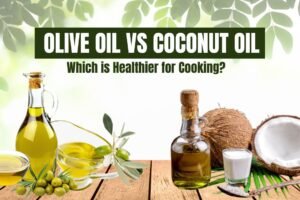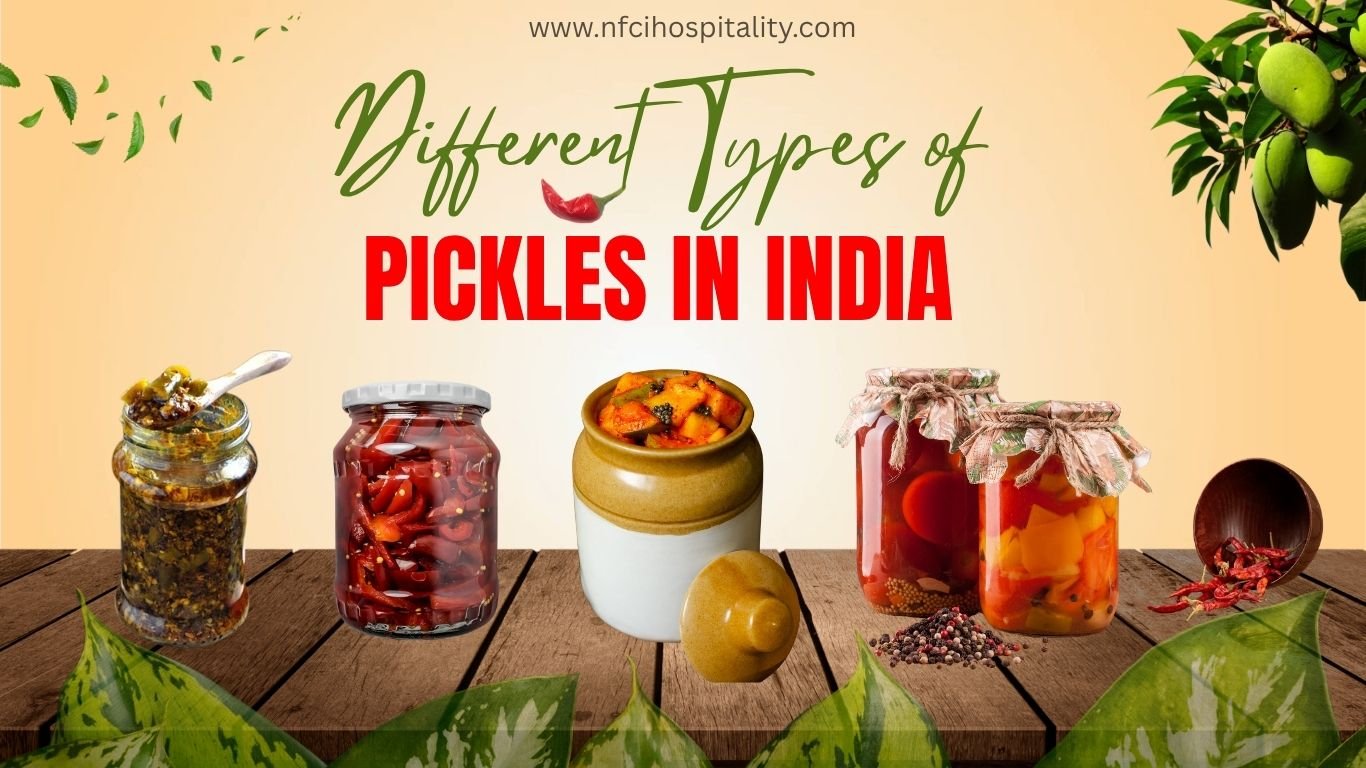
Different Types of Pickles in India
When we talk about Indian food, the conversation feels incomplete without one staple on the side — pickles.
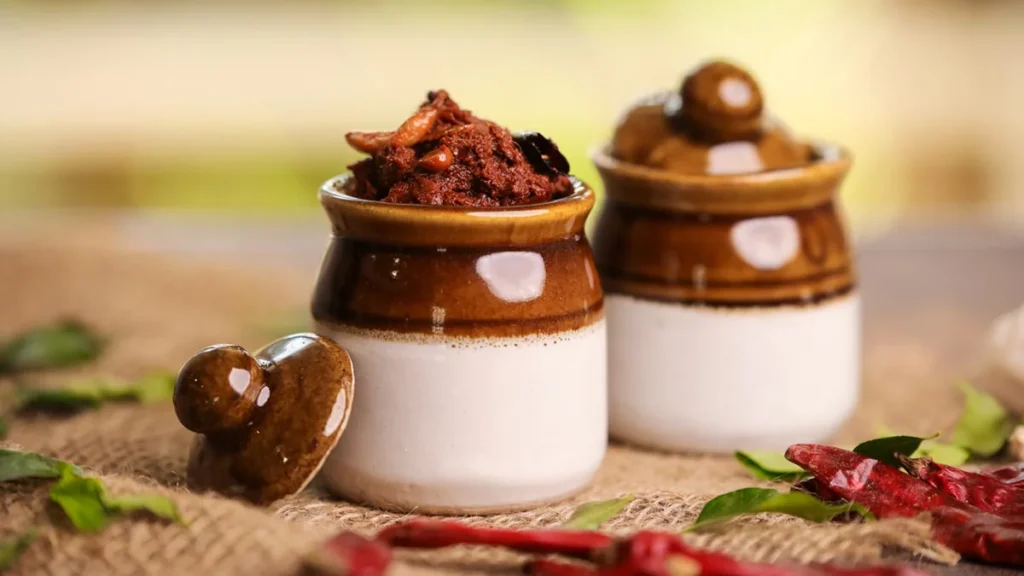
India has one of the richest pickle traditions in the world. In hindi, it is known as “Achaar” and one of the most loved items in Indian households. A single spoon of mango or a chilli pickle can enhance the taste and makes any meal spicier. In this blog, we’ll explore 10 popular types of pickles found in India, how they differ regionally, and why they’re loved so much.
Why Are Pickles So Popular in India?
India’s warm climate, abundant seasonal produce, and love for bold spices have given rise to some of the most flavorful pickles in the world. Every household has its own secret recipe, often passed down by grandmothers. The use of oil, salt, spices, and sun-drying techniques ensures that pickles stay preserved for months — and taste even better with time.
Different Types of Pickles Found Across India
Let’s take a spicy tour through India and discover the most iconic types of pickles:
- Mango Pickle – The King of Achaars
India’s most loved and all-time favorite, mango pickle which is popularly known as “Aaam ka Achaar” is a tangy-spicy blend prepared from raw mangoes, mustard oil, fenugreek, and red chili powder. Every region has its own version from fiery Punjabi to tangy South Indian.
Student Tip: Learn oil-based preservation techniques — mango pickle is a classic example of long-shelf fermentation.
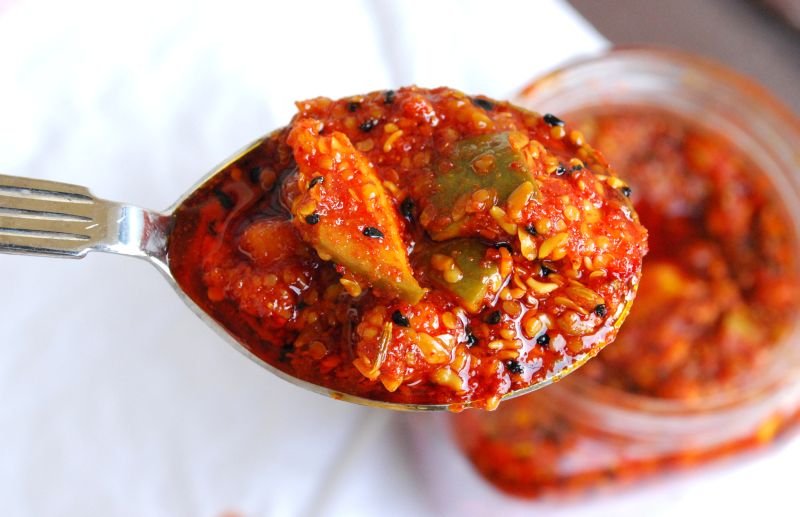
2. Lemon Pickle – Zesty Goodness in a Jar
Known as “Nimbu ka Achaar” in hindi, made with whole or sliced lemons – this pickle offers a sharp punch of flavors with black salt, spices, and a touch of bitterness. It’s sun-matured and improves with time—just like old memories.
Did you know? Lemon pickle teaches slow fermentation, an important skill in preserving seasonal produce.
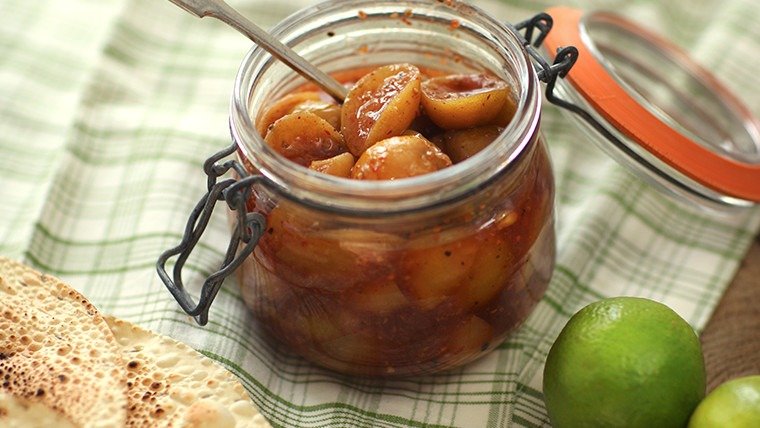
3. Chilli Pickle – The Spicy Punch
Known as “Mirchi ka Achaar” in Hindi, made using green or red chilies stuffed with spicy masala. Perfect for those who love bold flavors with their parathas or dal-rice. This pickle is highly popular in Rajasthan.
Culinary Insight: Stuffed chili pickles showcase the art of dry-spice stuffing and flavor balance.
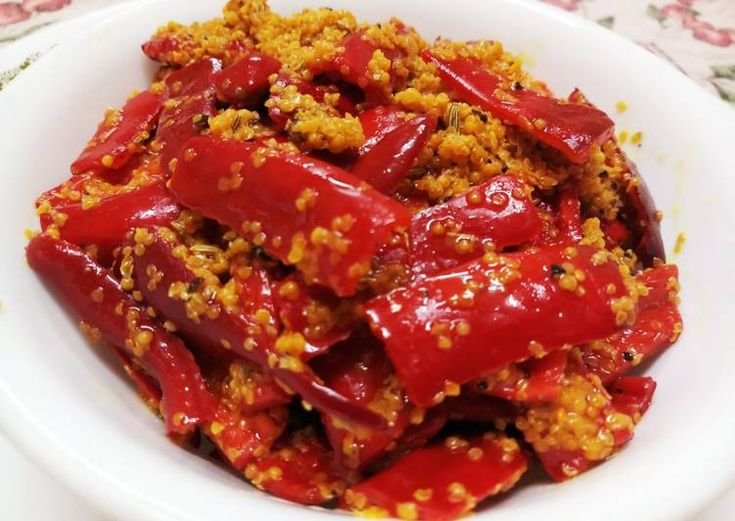
4. Garlic Pickle – Pungent and Powerful
Known as “Lahsun ka Achaar” in Hindi, Garlic cloves are pickled in mustard oil with a strong blend of spices, making this an aromatic delight. Popular in North India, it’s perfect with dal-rice or paratha.
Skill Gained: Garlic pickles teach spice tempering and oil-based curing, crucial for taste retention.
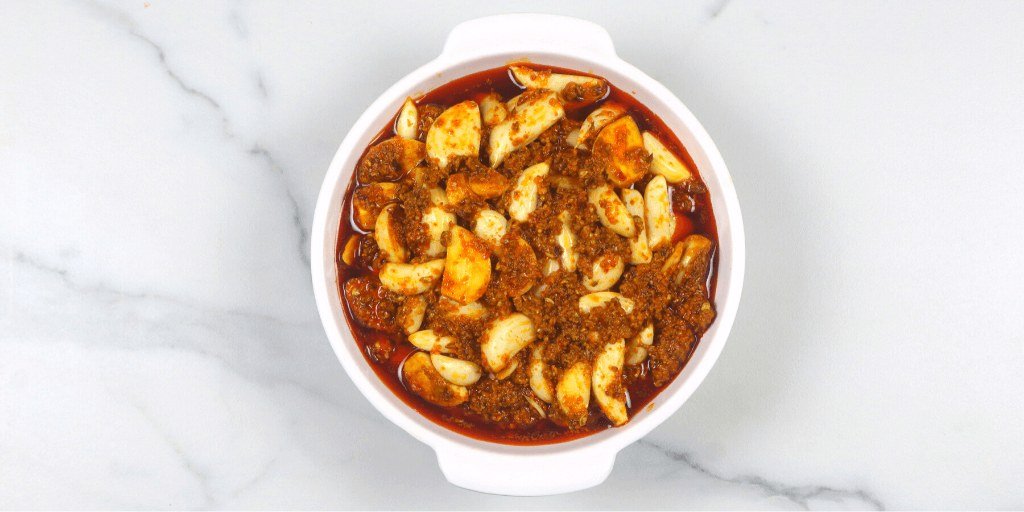
5. Amla Pickle – Healthy and Flavorful
A spoon of Amla a day keeps dull meals away! Packed with Vitamin C, this pickle is made from Indian gooseberries and known for its immunity-boosting qualities. This pickle is very tasty and often eaten with curd rice or plain chapati. It works as both medicine and meal.
Nutrition Fact: Amla is rich in Vitamin C — learning to pickle it preserves its nutritional value.
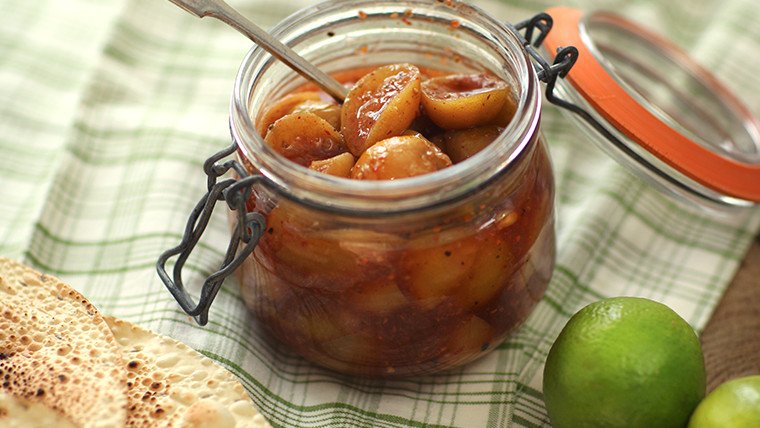
6. Mixed Vegetable Pickle – A Crunchy Masala Fusion
Carrots, cauliflower, turnips, and more come together in this colorful, spiced pickle. Each bite is a surprise, full of different textures and flavors. blend of veggies like carrot, cauliflower, and turnip marinated in tangy spices.
Learning Angle: Helps students understand texture play and seasonal preservation in bulk.
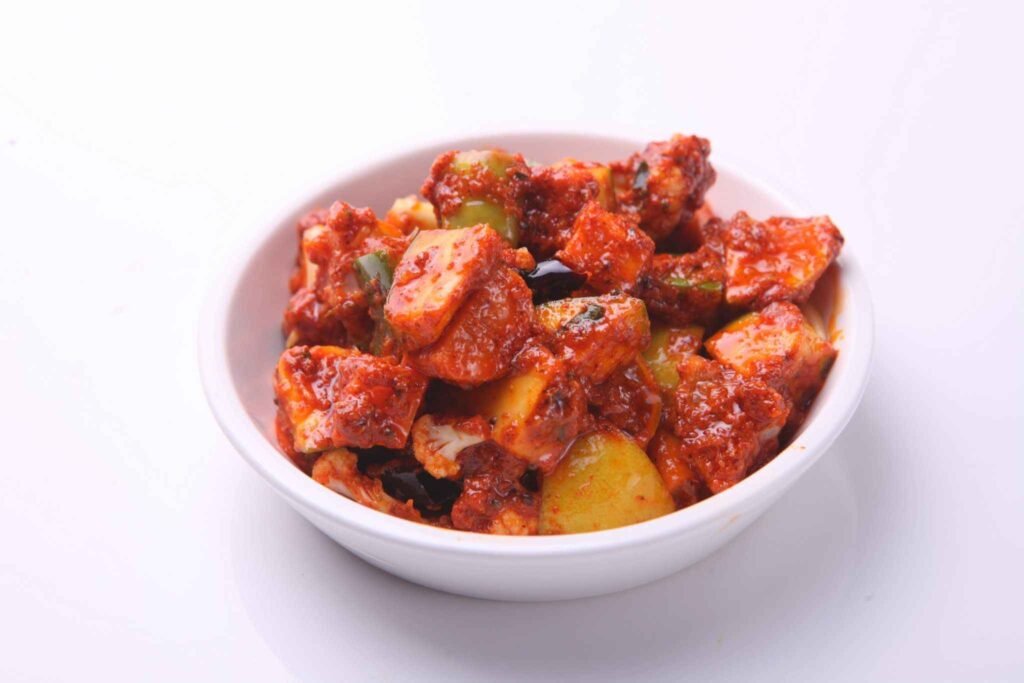
7. Onion Pickle – Tears of Joy Guaranteed
Whole baby onions or sliced ones are pickled with mustard seeds, vinegar, and red chili. Tangy and slightly sweet, it pairs perfectly with biryani or rajma rice. It’s easy to make. Not just for burgers—onion pickle brings boldness to every bite!
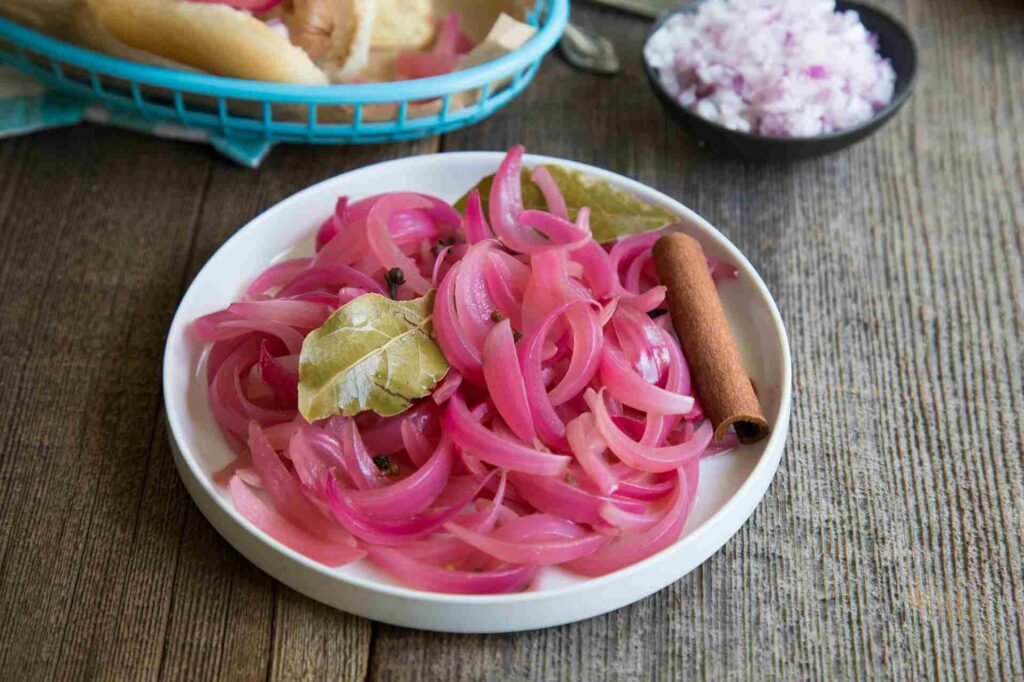
8. Bamboo Shoot Pickle – The Northeast’s Hidden Gem
This is a must try for adventurous foodies. Fermented bamboo shoots are mixed with mustard oil and chili powder for an earthy, slightly sour pickle unique to Northeast India.
Culinary Culture: Teaches regional diversity and fermentation science from North East India.
9. Sweet Mango Pickle (Chhundo) – Sugar, Spice & Everything Nice
This easy-to-make Gujarati specialty is made from grated mangoes, sugar, and mild spices. It’s sweet, tangy, and the perfect balance to a spicy meal. It’s versatile and can be eaten with many things.
Technique Insight: A sweet pickle shows balance of caramelization and spice preservation.
10. Tomato Pickle – A Nutritional House
Tastes like a spicy hug from your South Indian grandma. Juicy tomatoes cooked with tamarind, red chili, garlic, and mustard seeds make this fiery, flavorful pickle a must in Telugu and Tamil households.
Lesson: Useful to understand preservation without oil — via salt, spice, and heat.
Health Benefits of Pickles in India

Pickles not only offer a burst of flavor, but also provides several health benefits if consumed in moderation:
- Rich in probiotics (if fermented naturally)
- Aid digestion
- Provide essential nutrients like vitamin C, iron, and fiber
- Boost appetite
Final Words
Indian pickles are more than just side dishes — they’re a flavorful link to our traditions and culture. Whether you’re enjoying a hot paratha with mango pickle, or a bowl of rice with lemon pickle, there’s always a burst of taste waiting to delight your senses.
Master the Art of Pickling and Culinary Skills with NFCI!
NFCI (National Finishing and Cookery Institute) is India’s leading institute for skill-based culinary and hotel management education, offers:
- Government Approved Courses
- Practical Training with Industry Experts.
- 100% Placement Support
- Real-time Kitchen Labs.
Apply today and start your culinary journey with NFCI!
FAQs
- Are pickles good for weight loss?
Pickles can be good for weight loss if consumed in moderation. Some pickles made with vinegar or fermented naturally contain probiotics that support gut health. - Are pickles good for health?
Yes, pickles made with natural fermentation (like lemon, mango, or amla) can be rich in beneficial bacteria, which improve gut health. Consuming too many oily pickles on regular basis may affect blood pressure or digestion.



